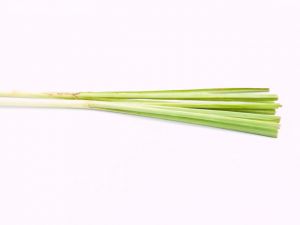Cucumber, or Cucumis sativus, is in the same family as melon and squash. Commercially, cucumbers are divided into two groups, slicing and pickling. Slicing cucumbers generally have thick skin and are larger than the thin-skinned pickling cucumbers.
Cucumber has even escaped the eyes of researchers, being upstaged by the cruciferous crew (broccoli, cabbage, etc.) until it was found that it contains three beneficial lignans (lariciresinol, pinoresinol and secoisolariciresinol), which have been associated with a reduced risk ofcardiovascular disease as well as several different types of cancer, including ovarian, prostate, breast and uterine.
Here is what my long-overdue research on this unappreciated veggie revealed. I hope you, like me, have a new respect for cucumber when you are done reading.
Cucumber is a nutritional powerhouse
Cucumber is a superfood containing almost all the vitamins you need each day, including B vitamins, vitamin C, fiber, vitamin K1, copper, potassium and manganese. Eat just one cucumber daily in place of a multivitamin.
Need an energy boost?
Rather than reach for that third cup of coffee, chomp on a cucumber instead. The carbs and B vitamins in cucumber provide sustaining energy that can last for hours.
Drank a little too much?
To avoid having your night out turn into a morning nightmare, try eating some cucumber. Eat a cucumber right before bed and your hangover pains will be lessened. Cucumber contains a mix of B vitamins, sugar and electrolytes that keep you hydrated and feeling great after a night out on the town.
Eating too much sugar?
Reduce cravings by snacking on cucumber slices rather than reaching for sugary snacks. I have started keeping a little dish of sliced cucumber by my desk. With a sprinkle of sea salt and a little pepper, this snack keeps me full all day long!
Feeling stressed?
If you are having a crazy day, boil a few slices of cucumber on the stove and breathe in the steam. The aroma of cucumber can promote feelings of calm and relieve anxiety. Want an extra boost? Add a few drops of anxiety-busting lavender essential oil into the mixture.
Does your breath stink?
If you suffer from halitosis, aka bad breath, you may want to consider eating cucumber instead of reaching for sugary breath mints. Phytochemicals in cucumbers kill bacteria that cause bad breath and cavities. Eat a slice after each cup of coffee or meal for breath that stays fresh all day long.
Are you stopped up?
There are any number of reasons why you may experience constipation. Sometimes it is the result of stress, medication or eating a highly processed diet. Cucumbers are high in fiber, which can keep you regular and keep your digestive system working at full speed.
Do you need a detox?
Cucumber not only contains a lot of water, which helps keep the body hydrated, but it also has detoxifying properties. A study from 2013 published in the journal Fitoterapia found that cucumber has “a cleansing action within the body by removing accumulated pockets of old waste materials and chemical toxins.” Want to detox? Eat a cucumber… or three! Better yet, eat cucumber daily to keep toxins from building up.
Do you need an immune boost?
The blend of nutrients in cucumber make it ideal for boosting the immune system and treating common ailments like the common cold and flu viruses. The anti-inflammatory properties of cucumber fight inflammation of the nose and throat when you are suffering from a cold.
Is your blood pressure high?
High levels of potassium in cucumber help regulate blood pressure by boosting electrolyte levels and mitigating the damaging effects of sodium overconsumption.
Do you want to fend off free radicals?
Cucumber, like melon, is high in antioxidants. This prevents the spread of free radical damage that can lead to premature aging and cancer.
Do you have puffy eyes?
Nutrients in cucumber make it effective at relieving inflammation both internally and externally. Place fresh cucumber directly onto swollen areas to reduce puffiness within just a few minutes.
Are you feeling bloated?
Every once in a while, I just feel bloated. The good news is, now I know that all I have to do for relief is eat a cucumber! The high water content and potassium in cucumber make it a mild diuretic that can fight bloating.
Do you want to build your bones?
Cucumber is high in magnesium, calcium, and vitamin K1 — all essential for bone health. Eat cucumber regularly if you are eating a low-meat or low-dairy diet.
Are you starting to forget things?
Cucumber is naturally high in copper, which is essential for brain function. A study from 2014 published in the journal Aging Cell found that the chemical known as festin, commonly found in cucumber, is effective at fighting the damage of Alzheimer’s disease.
Is your skin looking tired?
Perhaps you’ve seen cucumber used at the spa, and for good reason. Cucumber contains compounds that refresh and rejuvenate the skin from both the inside out and outside in. Create a pulpy mixture of cucumber and a few drops of lemon juice and apply directly to the face for a mask that is both healthy and refreshing.
Do you want strong, shiny hair?
Cucumber contains silicone, sulphur, phosphorous and calcium, all necessary for healthy hair growth. Eating cucumber regularly can reduce hair loss and strengthen hair shafts.
The compounds in cucumber also help hair look shiny and healthy. Massage cucumber juice into your hair after bathing and allow it to sit for about five minutes before rinsing away with lukewarm water.
Try adding a few of these uses for cucumber to your weekly routine and soon you will feel energized, refreshed and stress-free. Who knew the humble cucumber was such a superfood?
 While not all of the above-listed folk remedies have been scientifically tested, people have been using them for generations, and would not have done so if they didn’t get results at least some of the time; different remedies work for different individuals depending on the case.
While not all of the above-listed folk remedies have been scientifically tested, people have been using them for generations, and would not have done so if they didn’t get results at least some of the time; different remedies work for different individuals depending on the case.


